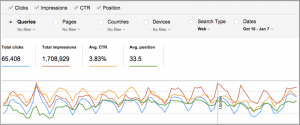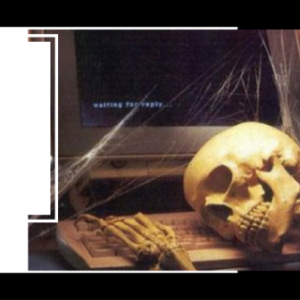By Jake Saper

We are living through the greatest period of career transition in a generation. As a part of the Great Resignation, we’ve seen more than 20% of the American working population change jobs over the last 12 months. Now, in the face of economic uncertainty, some companies are cutting back their workforce—forcing many more people to change jobs in the coming months.
Regardless of the cause, this transition provides a great opportunity to take a structured approach to answer the question of, “What do I want to do when I grow up”?
Along my own journey to answer that question, I’ve collected a few frameworks to help with decision-making.
Framework 1: Do what gives you energy
The best career (and life) decision-making is rooted in self-awareness. Unfortunately, far too many decisions come from copying peers. Pursuing a job or lifestyle because others are doing it doesn’t lead to happiness. Happiness can really only come from the hard work of understanding yourself. As intimidating as that sounds, I’ve found a simple “energy assessment” framework has helped me immensely on my own path to self-discovery. I credit Matt Mochary, an executive coach, for sharing this with me a few years back.
After I spend time with someone or do something, I ask myself a question: “Do I have more or less energy now than when I started?” If the answer is more, I try to spend more time with that person or doing that thing. If it’s less, I do the opposite.
I’ve found the energy assessment to be a very powerful tool that helps me prioritize more effectively at work and in my personal life.
To apply this framework to your career decision making-process, reflect on the key tasks you do in your current (and past) roles. Group these tasks into two categories: tasks that give you energy and those which take it away. The goal is to improve the energy-giving to energy-draining ratio with each new step in your career.
Framework 2: To go or not to go to grad school
One career step lots of folks consider is business school. Unlike most professional degrees, an MBA isn’t a requirement for most business roles. So how do you figure out whether you should go?
Anecdotally, interest in business school seems to be negatively correlated with economic sentiment (I’m sure some sharp MBA has done this analysis and I’d love to see it if so). As the economy cools (or heads into a recession . . . ), folks get nervous about their career stability and seek safe haven in academia.
While there’s solid logic to this train of thought, far too much career decision-making is rooted in macro-environmental factors, and far too little in the micro.
To illustrate this framework, imagine a bell curve graph. On the X-axis, you answer the question: “How clear are you about your career?” The further right you go, the more clarity you have. On the Y-axis, you answer the question: “How useful would business school be?” The further up you go, the more useful B-school is.
The most important question to ask yourself as you weigh the decision to pursue your MBA is: “How much clarity do you have in your career journey?” If you’re already in a nirvana state in which your energy creation to extraction ratio is super high in your current role (this would be the far right side of a bell curve), don’t go! The time you spend climbing the steep development curve in the career you’re excited to pursue pays compounding dividends, particularly earlier in your journey.
If you’ve gathered enough data to narrow your career choices to a few hypotheses you want to test, business school can be a very efficient place to test them (and have silly amounts of fun along the way). This is the fat part of the curve and the cohort which gets the most out of the experience from a career decision-making perspective.
The most common mistake I see is people going to business school without any real clarity on career direction. Without the self-reflection to narrow down how they should spend their time in and out of class, these folks tend to spin their wheels for a couple of years and come out without much incremental clarity (and a fair bit of debt). This cohort also tends to change jobs frequently after business school. Too many students are in this cohort; the average tenure of jobs held post-grad in my business school class was 18 months.
There are lots of reasons to go to business school, but when it comes to advancing career decision-making, the hypothesis-driven cohort gets the most out of the experience by far.
Framework 3: Build your career choice table
I had three hypotheses to test in business school. For me it was first, do I want to start a company? And second, do I want to stay focused on clean technology? And finally, do I want to be an investor? I started my career in management consulting (hence my love of frameworks) and then joined a startup as one of the first employees. I learned enough about myself from my early career experiences to distill these key questions and set about testing them in business school. To that end, I added an master’s program focused on environmental sciences alongside my MBA to go deeper on the technical side of clean tech. I also started a company and built out an investment strategy, also in clean tech.
Using all this input data, I then had to figure out how to make a decision about what I wanted to do with my life post-graduation. And that’s where the third framework came in.
I started by reflecting on the key differentiating traits of the careers I was considering. Some were narrowly focused on specific industries and areas of expertise, while others were broader. Some had higher risk/reward (and higher agency, which seemed to be correlated) while others lower. Thus, I decided to build my career “2×2” with those as the key axes: broad or narrow focus on the X-axis and low risk/reward vs. higher on the Y-axis.
Next, I plotted all the jobs I’d had on my 2×2:
- Consulting: As a generalist management consultant, I was in the bottom left quadrant. I worked on a ton of different problems and industries and had very little agency because I was ultimately hired to advise, not decide. Plus, there was little upside in consulting, as we were typically paid flat fees regardless of client performance.
- Entrepreneurship: Starting a company is the farthest top right you can go, with both deep content focus and high agency and upside. My parents are cofounders and have started a number of companies together since I was young. I’ve seen the highs and lows of the founder journey throughout my life and have deep respect for those who choose this path. Perhaps influenced by my role “riding shotgun” at my parent’s startups, I’ve realized I derive tremendous energy from supporting founders on their journeys.
- Tech employee: Being an employee at a company is typically in the bottom right quadrant, though the position on the quadrant varies a lot based upon when you start, the size of the company, and what role you have. You can be really high up here if you’re a very early employee. If you’re a later stage employee in a later stage company, you’re likelier to be more bottom right. This is a really energizing quadrant for a ton of people. Working as a product manager at Google optimizing a specific feature is a really exciting place to be for people that find energy from having tremendous resources to go super deep on solving a really narrow, specific problem.
- Venture capitalist: I found being a VC somewhere in the upper left quadrant. The position in the quadrant also varies a ton based on the type of investing and firm you work at. At Emergence, we are focused exclusively on B2B cloud companies and aspire to be the Most Important Partner to our founders by limiting our investing to one investment per partner per year, so we’re in the upper right quadrant of the upper left quadrant.
Unlike in a consulting slide, there is no quadrant that’s objectively better than the others. There are elements that gave me energy from each of my jobs. But I found that my energy assessment pointed me toward roles with moderate industry and expertise focus and some agency or risk. For myself, venture capital was the best path to optimize my energy ratio. Almost a decade into my role here, I’m very grateful to these frameworks for giving me the clarity to know what I want to do with the rest of my working career.
If you want to build your own version of this “2×2” table, try these three simple steps:
- Do your energy assessment to hone in on roles that give you energy.
- Distill the key differentiating traits of these potential paths onto the two axes.
- And then plot away and determine what speaks to you!
Jake Saper is a general partner at Emergence Capital, an enterprise software-focused venture capital firm. He also guest lectures on an occasion at Yale and Stanford universities, coaching students on career strategy.
Fast Company , Read Full Story
(41)
Report Post




